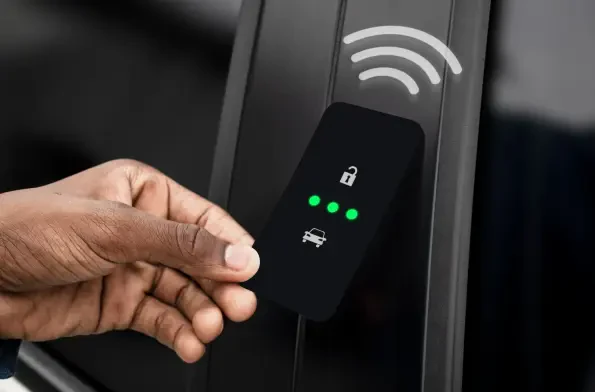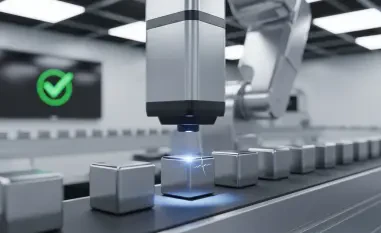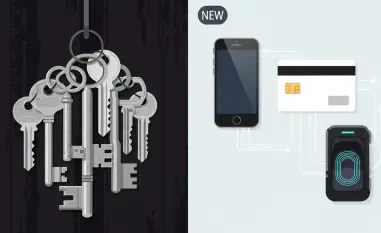In an era defined by digital transformation, smart lock technology is reshaping the landscape of security for both personal and business purposes. Gone are the days of relying solely on traditional mechanical locks and keys that present numerous challenges, from lost keys to duplicated copies. The evolution towards digital systems is driven by an undeniable need for increased control, safety, and convenience. As these technologies advance, they redefine how spaces are accessed and protected, offering revolutionary solutions tailored to the needs of contemporary life.
The Shift from Traditional Locks
From Lost Keys to Digital Credentials
Traditional mechanical locks are increasingly seen as cumbersome and outdated, unable to meet the security demands of today’s world where agility and reliability are paramount. These systems pose significant risks, such as the potential for losing keys or having unauthorized duplicates created without detection, which can lead to breaches and associated financial losses. In contrast, smart locks address these vulnerabilities by utilizing digital credentials. These credentials can be managed through various secure methods, including smartphone applications, biometric authentication, or secure PIN codes, providing a more adaptable and traceable access management strategy.
The switch to smart locks means more than just embracing new technology; it represents a fundamental shift in how security is perceived and executed. With digital credentials, property owners and facility managers can issue, modify, or revoke access privileges remotely, enhancing the flexibility and responsiveness of security protocols. This adaptability is particularly beneficial in dynamic situations, such as managing multiple users or temporary access needs, thereby allowing better control over who can enter specific areas at any given time. This transition from physical to digital represents a leap forward in reducing the logistical burden associated with traditional key management.
Challenges of Mechanical Systems
Mechanical lock systems are often limited by their inability to provide quick and reliable access control for multiple users. When accommodating numerous individuals, especially in business environments, the need to manage a multitude of keys becomes impractical and costly. Moreover, traditional locks do not offer a built-in mechanism for tracking and auditing entry and exit, leaving security managers blind to access patterns and potential unauthorized use. Smart locks circumvent these limitations by offering streamlined user management capabilities and advanced auditing features, effectively transforming how access is monitored and controlled.
Digital records are an intrinsic element of smart locks, providing comprehensive logs of every interaction with a lock. These records enable property owners and security personnel to maintain a high level of accountability and transparency, significantly reducing the potential for security breaches that go unnoticed. Additionally, smart locks contribute to more efficient operations, as they eliminate the need for physical rekeying when security credentials need updating. This capability minimizes disruption and reduces downtime, ultimately saving resources and enhancing overall operational security. The ability to automate and optimize access control processes also leads to more robust and responsive security measures.
Integration and Interconnectivity
IoT and Smart Locks
Smart locks are not standalone devices but part of a larger ecosystem that incorporates the Internet of Things (IoT) to deliver a cohesive security solution. This interconnectedness amplifies the capabilities of smart locks, allowing them to integrate seamlessly with existing security infrastructures. Through IoT, smart locks provide real-time access control and monitoring services, issuing immediate alerts in case of unauthorized activity or attempted breaches, which strengthens the layers of security and enhances the ability to respond swiftly to incidents.
The integration of smart locks within an IoT network facilitates the creation of an intelligent security system that can adapt and respond to various scenarios. For instance, smart locks can be programmed to interact with surveillance cameras, motion sensors, and other security devices, creating a holistic system that not only locks and unlocks entry points but also monitors the vicinity for unusual activity. The synergy between smart locks and other IoT devices allows for a proactive security strategy, reducing risks before they escalate into significant threats and providing peace of mind to property owners and managers.
Automation Platforms
Smart locks have emerged as crucial elements within home and business automation platforms, offering insights and control that extend beyond simple mechanical locking mechanisms. Their integration enables users to manage security remotely, utilizing smart devices to ensure entry points remain secure or to grant access as required. The ability to automate security responses, such as sending notifications when a door is unlocked or verifying the identity of a person attempting entry, empowers users to tailor security solutions to their specific needs and preferences.
Automation also enhances the efficiency of security protocols, as users can establish criteria for automatic locking and unlocking based on time, location, or specific triggers. Such automation reduces the burden of manual security management and ensures that security measures are consistently applied without the risk of human error. This feature is particularly valuable for businesses that must manage access across multiple sites, providing the flexibility and scalability needed to adapt to varying operational demands while maintaining the integrity of security infrastructures.
Impact on Different Environments
Enhancing Home Security
Smart locks offer transformative benefits for homeowners by replacing traditional security measures with more advanced, intuitive solutions that alleviate the common concerns associated with lost keys or unauthorized access. With real-time status notifications and the ability to remotely manage access, homeowners gain increased control over who enters their home, ensuring the safety of loved ones and property alike. The convenience and adaptability of smart locks cater to specific personal security requirements, such as securing entry points like front doors, garages, and even interior home offices.
The ability to customize access options according to individual preferences means that smart locks can be integrated with wider smart home systems, further streamlining security management. This integration allows for personalized security settings that can adapt to schedules and the presence of others within the home, enhancing the overall safety and convenience offered by smart locks. Notifications delivered via mobile devices offer peace of mind while away from home, reinforcing a sense of security with constant real-time updates on door status, potential break-ins, or unusual interactions.
Business Advantages
In the business arena, smart locks play a pivotal role in revolutionizing how security is managed across operations by addressing the complexities of access control in modern workplaces. Traditional lock systems are often inadequate for business environments that require managing access for multiple employees, contractors, and visitors, while also necessitating stringent accountability measures. Smart locks fulfill these requirements by facilitating remote access management, generating exhaustive audit trails of all interactions, and automating routine security processes to streamline operations and mitigate risks.
By embracing smart locks, businesses gain the ability to efficiently manage access rights, ensuring only authorized individuals can enter specific areas, thereby reducing the risk of unauthorized access. The detailed logs and metrics generated by smart locks improve accountability, providing valuable insights into employee movements and ensuring compliance with established security policies. The resulting operational resilience derived from these capabilities not only enhances security but also reduces the administrative burden associated with manual access control tasks, allowing businesses to focus on core activities with confidence.
Essential Features and Future Trends
Key Features of Smart Locks
To maximize the effectiveness of smart locks, several key features should be prioritized. Robust encryption is paramount to safeguard sensitive credentials against cyber threats, while a long battery life ensures reliability and minimizes maintenance requirements. The adaptability of user management capabilities is also essential to accommodate the diverse access needs typical of different environments, allowing for seamless integration with existing security measures, particularly in outdoor settings where exposure to elements is a consideration.
Durability is a critical factor for smart locks, especially for those deployed in external environments that must withstand diverse weather conditions. Furthermore, the ability to integrate with other security systems, such as alarms and surveillance cameras, enhances comprehensive security solutions and enables a more synchronized approach to safeguarding properties. These features not only accentuate the functional advantages of smart locks but also ensure their sustained effectiveness and reliability, offering users peace of mind regardless of their unique security demands.
Trends Shaping the Future
In today’s age of digital transformation, smart locks are revolutionizing security measures for both individual and corporate use. The outdated era of relying exclusively on traditional mechanical locks and keys, which often led to problems like misplaced or duplicated keys, is being overtaken by digital innovations. This shift towards technology-driven solutions is propelled by a clear demand for enhanced control, safety, and ease of use. As smart lock technology continues to advance, it transforms our approach to accessing and securing spaces, offering groundbreaking solutions that align with the demands of modern life. With these tech-savvy locks, daily interactions with security systems are streamlined, granting users the ability to monitor and control access with mere digital commands. These systems integrate seamlessly with smartphones and smart home devices, enabling remote management of security with unprecedented ease and reliability, thus reshaping the way we protect our surroundings.













